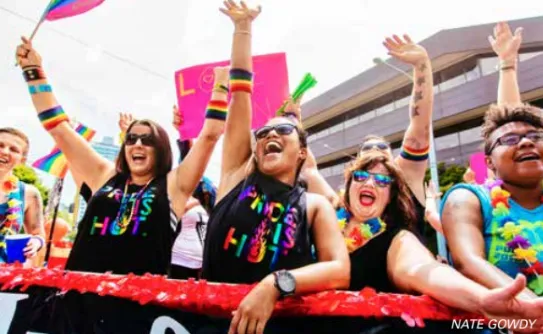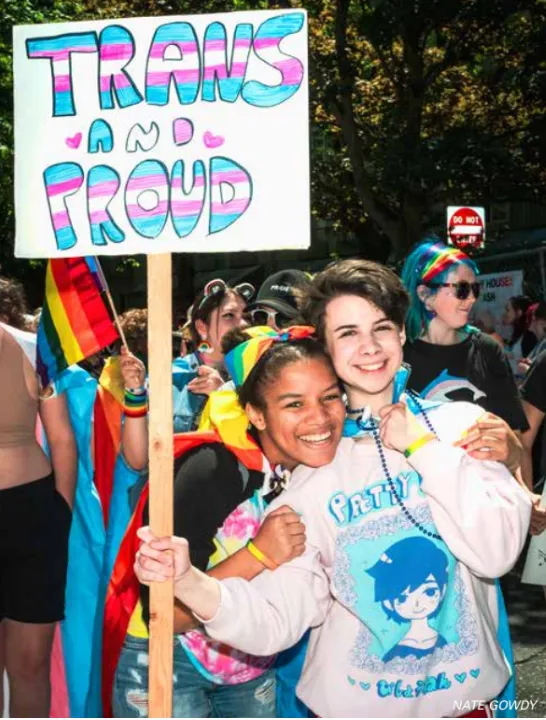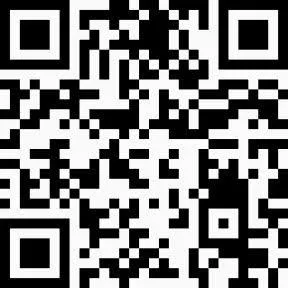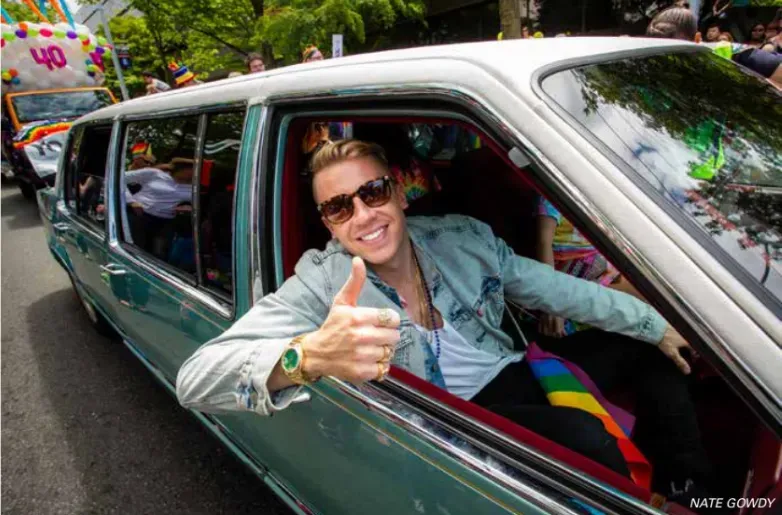It’s the summer of 2009, and I’m 25 years old. I roll into Seattle in my packed ’97 Corolla. I’m a straight, white, cis cliché from Elkhart, Indiana — land of RV factories, churches, riding lawnmowers, and faded American flags. I’m chasing love, meaning, purpose — anything less bland than the life I’m leaving behind. I have a journalism degree, a bitchy kitten named Toonces, a four-megapixel point-and-shoot, and the vague hope that if I keep saying yes to things, maybe one day I’ll become interesting.
From afar, I always looked up to Seattle — KEXP, The Stranger, the ’90s Sonics (fun fact: Shawn Kemp’s from Elkhart too). It was the city of cool, of rain and rebellion. I always imagined fitting in with the flannel-and-vinyl-record crowd.
But when I arrive, Capitol Hill — my new home and portal — is urban Narnia: flamboyant hipsters, Lesbians, Queers, and queens hold hands in the street, glitter dusts the pavement, and clove smoke curls beneath faded rainbow flags and tattered punk flyers. I’m pulled into the drag scene — a nightly carnival of genderfuckery and defiant creativity that makes the Midwest feel like a black-and-white sitcom. I’m in love.
On December 3, 2010, at a bar, I find myself talking with George Bakan, the longtime publisher of the Seattle Gay News — a gruff elder of the old Gay guard, with rumpled clothes, a booming voice, Santa Claus stature, and hard-earned pride. Beside him is Shaun Knittel, a Navy-trained, Las Vegas–bred newsman who never stops moving, reporting, or swearing. I mention my half-baked idea of getting a “real” camera. George claps me on the back, looks me in the eye, and says, “So do it.” That moment quietly rewrites the rest of my life.
A few weeks later, in January 2011, I show up at the SGN’s bunker of an office on 12th and Pine, armed with a Canon DSLR my parents gave me for Christmas. The place looks like it survived a riot and a rummage sale: floors buried in yellowed newspapers, protest flyers, and other combustible history.
Shaun sends me on my first assignment: a Greater Seattle Business Association mixer downtown. I skulk around like a photojournalist impersonator, unsure where I fit in. The photos — business casuals stabbing shrimp under jaundiced hotel lighting — are trash. Shaun runs one on the front page anyway and offers advice I still live by, “Next time, use your camera to engage people. Give them a reason to trust you.”
My second assignment is a Seven Deadly Sins–themed bear rave, where large, shirtless men are grinding in a fog of sweat, strobe lights, and pheromones. I’m out of my depth but bluffing hard, name-dropping SGN like it’s a press badge from God. I shoot everything on auto. When I return with the images, George beams like I’ve delivered above-the-fold gold: “Boy, you’re an event photographer.”
For a hundred bucks a week, I become Capitol Hill’s unofficial court reporter of the nightly drag tribunal: sequined seven-foot divas, the leather-and-kink crowd, and coiffed club kids bathed in strobe light. Sundays mean Pride Idol at Neighbours, where hopefuls belt their hearts out on stage and judges lip-sync along from the front row. Soon I don’t have to hunt the moment, for the queens are circling the straight guy. I am no longer just documenting joy but wholeheartedly swept up by it.

These nights fold me into the scrappy core of Seattle Pride, where volunteers hustle to pull the organization out of debt. By spring, board president Eric Bennett taps me as the official 2011 parade photographer — my biggest gig yet, for five hundred bucks. Come June 26, I plant myself at Fourth and Pine as the Dykes on Bikes roar past me on all sides. For hours, I chase eye contact, moments of connection, and the rhythm of people showing up together. While other photographers crouch politely at the curb, composing the action, I throw myself into it.
By 2012, I’m fully embedded. That year alone, I photograph 360 events as Washington state legalizes same-sex marriage, then has to fight like hell to defend it at the ballot box. The late-night icons from my archives reemerge as frontline infantry in fishnets, channeling years of survival, sass, and street smarts into a fight for civil rights. The same stages once reserved for drag numbers now host rally cries. On parade day, I sprint backward through floats and forward momentum, still learning how to tell the story of joy in a frame. By the end, I can’t feel my feet — but I’m planted in purpose, and it keeps me upright.
On Election Day, November 2012, voters choose love. Overnight, my 2013 calendar fills with weddings. Major Margaret Witt — hero Air Force nurse and “Don’t Ask, Don’t Tell” slayer — marries her bride in dress blues. Burlesque stars Kitten N’ Lou kiss through a confetti storm, then cartwheel into a bouncy house.
On parade morning, I join the leaders of Seattle’s LGBTQ+ movement atop the Space Needle, raising the HRC equality flag into lifting fog and golden sunlight. Hours later, beneath the same spire, I catch a tearful marriage proposal. I’m capturing what initially drew me in: radical joy, bold self-expression, and the gritty, unafraid freedom of being fully and authentically seen.
The ensuing years feel like a victory lap. By 2014, marriage equality sweeps most of the country, Seattle has an openly Gay mayor, and TIME magazine puts Laverne Cox on the cover, embodying rising Trans visibility. The Obama administration bans discrimination by federal contractors. Uncoerced and unannounced, the Space Needle flies the Pride flag — a civic gesture hinting at deeper change. Seattle Pride turns 40, with 200 contingents marching down Fourth Avenue: nonprofits in matching tees, megacorps tossing swag, labor unions waving handmade banners, churches offering hugs, performers in full bloom, and everyday Gays.
Grand Marshal George Takei leads with playful exuberance, flashing the Vulcan salute. Macklemore surprises everyone, waving from a classic Cadillac. Uniformed Boy Scouts march for the first time.

In June 2015 — two days before Pride — lighting strikes: the Supreme Court affirms the freedom to marry nationwide. “Love Wins” trends. The White House glows in technicolor. On Capitol Hill, crosswalks get their first coat of Queer. On Fourth Avenue on that last Sunday, strangers embrace like old friends. Pride feels less like performance, more like a long-held breath finally released. I let the current take me.
That summer feels like a honeymoon. Progress seeps into pop culture, policy, and even Target endcap displays — but it rarely moves in a straight line. I start getting national political assignments covering Bernie’s campaign and the 2016 party conventions. My images appear in outlets like TIME. I am also pulled toward documenting the opposite side of the political landscape: the tragic resurgence of white nationalism in America.
The backlash comes fast and brutal: bathroom bills, the Pulse massacre, a new administration eager to vilify drag queens, DEI, and Trans kids. My camera becomes a shield amid an emboldened far right and clouds of tear gas. I cover vigils and protests. I document grief. I stop trying to separate the personal from the political; I realize they’ve always been the same.
In 2020, the pandemic shutters safe spaces, cancels the parade, and empties the streets — until crowds resurface, fists raised, familiar faces never far from the front. Pride month becomes one of protest. I’m in intersections — alongside medics, masked activists, and mutual aid crews — witnessing looters, provocateurs, and Seattle police officers targeting legal observers, Black youth, and photojournalists.
I try to hold my lens steady. The light changes. The tone darkens. For years, the work becomes less about immediacy and more about what survives it: evidence of injustice, endurance, and — despite the pain and the parts no one can unsee — finding ways to preserve hope. In June of 2024, the SGN and Seattle Pride both celebrate 50 years. I’m able to credential a record 40 photographers — diverse in identity, experience, and perspective — each helping to tell the story from where they stand.
After 14 years, Seattle Pride and I conclude our long-running partnership. Chapters end. Roles shift. Even the closest vantage points don’t last forever. It’s time for a new generation of artists and creatives to do what we did, but differently — to make meaning in their own way, and see what I could never see.
If I’ve learned anything since that first bear rave, it’s that saying yes is just the beginning. I came to Seattle hoping to become someone worth knowing. This community taught me how to be someone who knows what I stand for.
These days, I think a lot about what it means to show up — not just with a camera but as an ally. To other photographers reading this: documenting a community is not the same as belonging to it. Pride is not a spectator sport. The Queers and co-conspirators who welcomed me, trusted me, and sometimes tested me — they’re still fighting. Against censorship. Against bans and book burnings. Against attacks on their identity, their humanity, and their right to exist. Our job is to listen and to amplify.
During the recent protest at Cal Anderson, where the SPD arrested 23 demonstrators for defending Queer space from a known hate group, one person said to me, “You’re not only here for your portfolio, right?” I wasn’t. But it reminded me: presence isn’t permission. This work isn’t mine to own — it’s mine to support. That’s what allyship looks like now: less capture, more care. And my practice has deepened to all of this: from creating to curating, from capturing images to publishing books, from the rush of chasing the moment to the responsibility and weight of carrying its memory.
Now, in 2025, I'm older. My ’97 Corolla I won’t let go of is ready for retirement. We've lost George and Shaun and many others — to time, mostly. Even my bitchy 17-year-old cat Toonces, only somewhat softened in her final years, is gone. Queer resistance feels cautious, intergenerational. What endures is gratitude: for the trust and the history. What remains is the work itself — the moments I got to hold up to the light, in service of a courageous, vibrant community.
I sometimes miss that kid from Indiana with that extra bounce in his step, but mostly, I’m proud to have become someone he’d once hoped to meet.
This piece was produced with contributions from Lisa van Dam–Bates, a filmmaker and editor based in the Pacific Northwest; and Carrie Schreck, a Los Angeles photographer, filmmaker, and essayist.
Nate Gowdy is a Seattle photographer and publisher whose long-term coverage of LGBTQIA+ life and politics focuses on pride, protest, and public memory. He is the author of Seattle Public Schools’ Our Students, Their Stories, a first-of-its kind book and traveling exhibition spotlighting the district’s Queer and Trans students, families, and staff through portraits and testimony.
Support the Seattle Gay News: Celebrate 51 Years with Us!
As the third-oldest LGBTQIA+ newspaper in the United States, the Seattle Gay News (SGN) has been a vital independent source of news and entertainment for Seattle and the Pacific Northwest since 1974.
As we celebrate our 51st year, we need your support to continue our mission.
A monthly contribution will ensure that SGN remains a beacon of truth and a virtual gathering place for community dialogue.
Help us keep printing and providing a platform for LGBTQIA+ voices.
How you can donate!
Using this link: givebutter.com/6lZnDB
Text “SGN” to 53-555
Or Scan the QR code below!



